Insulating your roof and external walls is a great way to reduce energy loss in your home. Air pockets in the various materials used in insulation create traps that prevent air-flow, thus minimizing transfer of cold air into your home in the winter, and allowing your home to stay cooler in the summer.
Home insulating materials also decrease the amount of air that can escape from your home, which results in less energy being lost. Each material has similar properties, but advantages vary. Choose your insulation carefully according to your homes needs, and you will find that keeping your home comfortable is more about what's between the walls than what it looks like on the inside.
1. Wool insulation
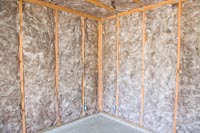
If you have ever worn a wool jumper or beanie, you probably already know that this natural fibre a fantastic insulator. Sheep wool batts are a traditional insulation method that is becoming popular once again, perhaps due to its ecological properties (it is, after all, from a naturally derived and renewable source, and its manufacturing poses a very small ecological footprint). Wool has the intrinsic quality of superior warmth as well as impressive acoustic-dampening capabilities. It is flame-retardant, as well as being very absorbent. The absorbency helps maintain a comfortable temperature inside the home; warm in the winter and cool in the summer. The fibre is also reusable, and holds its shape extremely well, especially compared to cellulose fibres. Unlike fibreglass, wool does not pose health risks to the respiratory system, and in fact absorbs certain chemicals, such as formaldehyde. In addition it is resistant to mould.
2. Cellulose fibre

Cellulose fibre is a popular choice because it is both economical and ecological. This type of insulation is made of any cellulose fibre, therefore recycled newspaper, pulp and paper by-products and other recycled wood materials that can readily be obtained and treated with fire-retardant chemicals such as boric acid. The beauty of this product is that it is essentially loose pellets, and does not come in a batt or sheet that needs to be fitted. It can easily be blown into a roof or wall space, and fill in empty areas around pipes and studs that could otherwise cause energy-loss. Since the 1970s, it has gained in popularity as it has extremely good thermal properties and can easily be used in older homes to add insulation in walls that previously did not provide much thermal protection.
3. Fibreglass batts
Recognizable for its bright-pink exterior, fibreglass batts remain the most popular of all insulation materials. It is cost-effective and has good thermal and sound proofing properties. One side of the sheet is coated with an air and moisture proof backing that helps maintain the insulating properties of fibreglass. Better quality fibreglass materials will have longer fibres, resulting in better insulation and a longer lasting product with less dust and particles. Fibreglass insulation can be a good environmental choice if the manufacturer has chosen recycled materials.
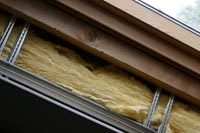
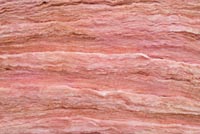
4. Polyester batts
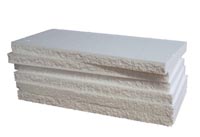
Polyester batts are a fairly user-friendly insulating option. Polyester is dust and particle free, and unlike fibreglass, does not require protective clothing to install since it is non-irritating to the skin. This synthetic material is very long-lasting, as it will not deteriorate, sag, or lose its bulk over time because it is not susceptible to mould or mildew, and does not attract insects. There are no additives required to create the batts, therefore no harmful chemicals need to be added to make this already fire-retardant material safe. Many polyester batts are also fully recyclable.
5. Air cell insulation
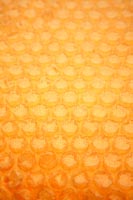
Air cell insulation is a fibreless alternative to home insulation. It is completely dust, allergen and residue free. Resembling corrugated cardboard or bubble wrap, air cell insulation is a space-efficient insulating method that can be used equally around pipes as it can be used in roofing, between walls and under floorboards. One big difference with the technology used in air cell insulation is that it can be combined with a thermo-reflective material. This method takes into consideration that radiation is a major factor in heat transfer. Although a large portion of energy is transferred through radiation, air cell insulation also takes care of energy loss by having heat-conductive air pockets within the material, similarly to other insulation methods.
Insulating your home properly will result in a more efficient environment that creates a smaller ecological footprint. By reducing the amount of energy your home requires to maintain a comfortable temperature, youre doing both your wallet and the earth a big favour.
There are many insulation installers throughout your area and you will find a contractor in all Australian states and cities, including Perth in Western Australia (WA), Darwin, Northern Territory (NT), Brisbane in Queensland (QLD), Sydney in New South Wales (NSW), Canberra in the ACT, Melbourne in Victoria (VIC), Hobart and Launcesten in Tasmania (TAS) and Adelaide in South Australia (SA).
